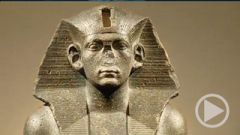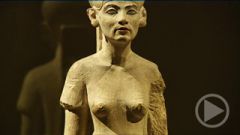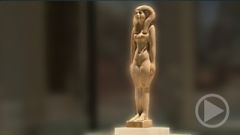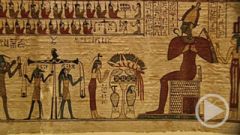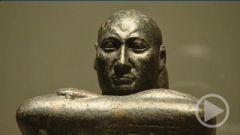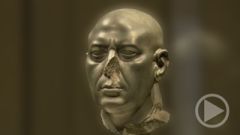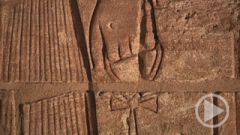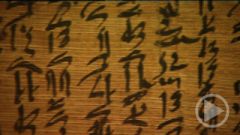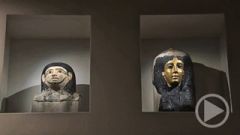- Home
- »
- Germany
- »
- Berlin
- »
- Museum Island
- »
- The Berlin Egyptian Museum
- »
- The Berlin Egyptian Museum - The Statues of the Goddess Sekhmet
The Statues of the Goddess Sekhmet
Statues of the Goddess Sekhmet
Three thematic levels come together in the standing figures of Sekhmet to make a complex statement about the ancient Egyptian idea of the divine. The sun disc worn as a head dress relates to the major and ever-present significance of the sun in ancient Egyptian religion. The head of a beast, in this case a lioness, expresses the superhuman power of the divine. And the divine takes human form in the female body of Sekhmet. By merging human and beast, Egyptian art creates a being which doesn't exist in the real world, and which is therefore a particularly suitable symbol for the unseen omnipresence of god.
The name Sekhmet means "she who is powerful", and her purpose as goddess of war is described as follows in ancient texts:
He fires the arrow, as Sekhmet does.
He is Sekhmet in his dealings with his enemies.
His arrow speeds after them like the arrow of Sekhmet.
His power pierces men's bodies like Sekhmet in her rage.
Great Sekhmet is with him,
She is with him on his steed
And her hand is with him.
But as "she who is powerful", Sekhmet also provides protection from disease. It was probably this attribute that persuaded king Amenhotep the Third to have more than seven hundred monumental statues of the goddess carved in granite in around thirteen sixty BC. The statues were erected in Karnak und in the king's mortuary temple in western Thebes as protection against the plague which had broken out in Egypt around that time.
Berlin's Egyptian Museum is fortunate enough to own seven of these statues. In the future, they will line a monumental avenue leading to the Egyptian temple court in the proposed fourth wing of the Pergamon Museum.


